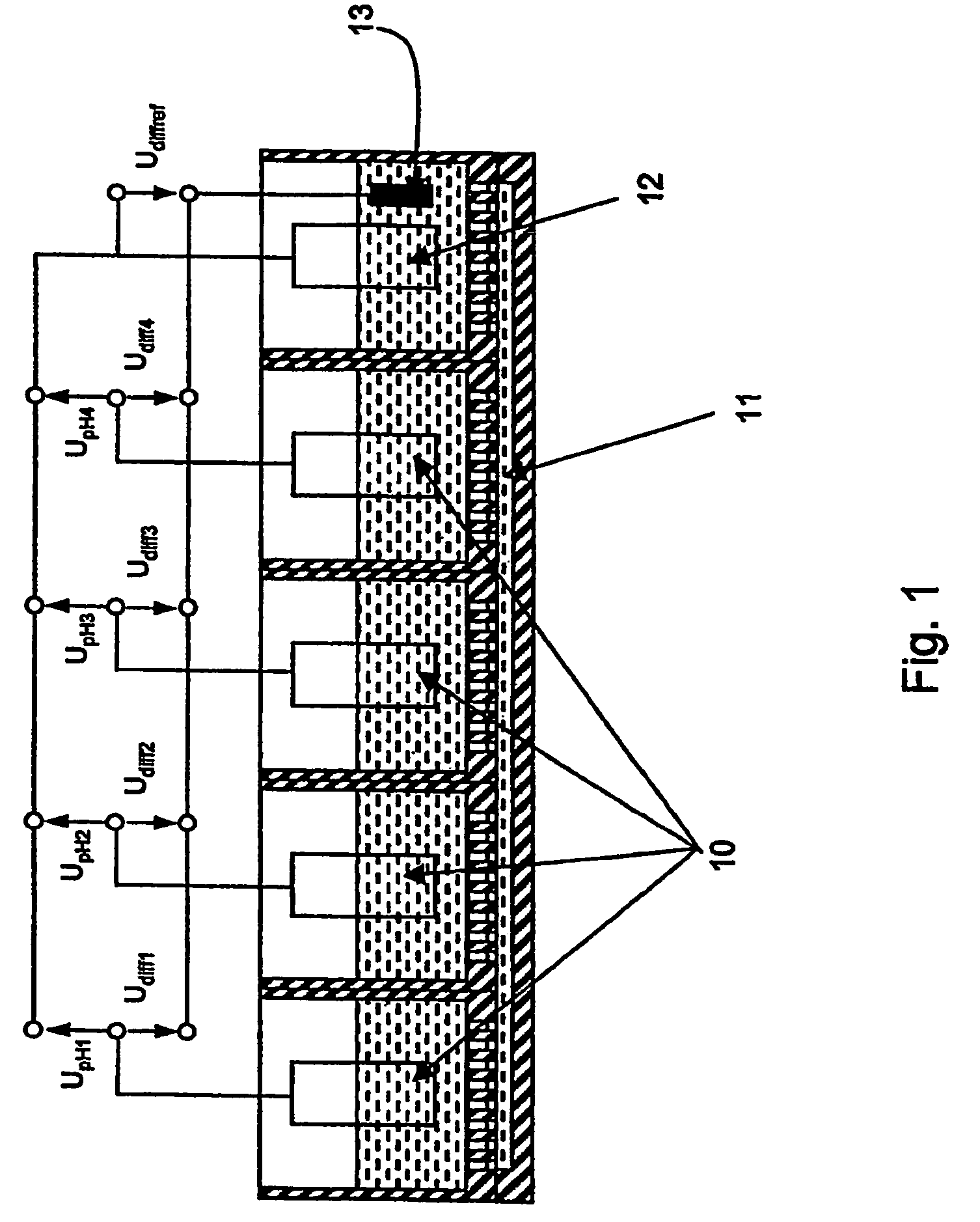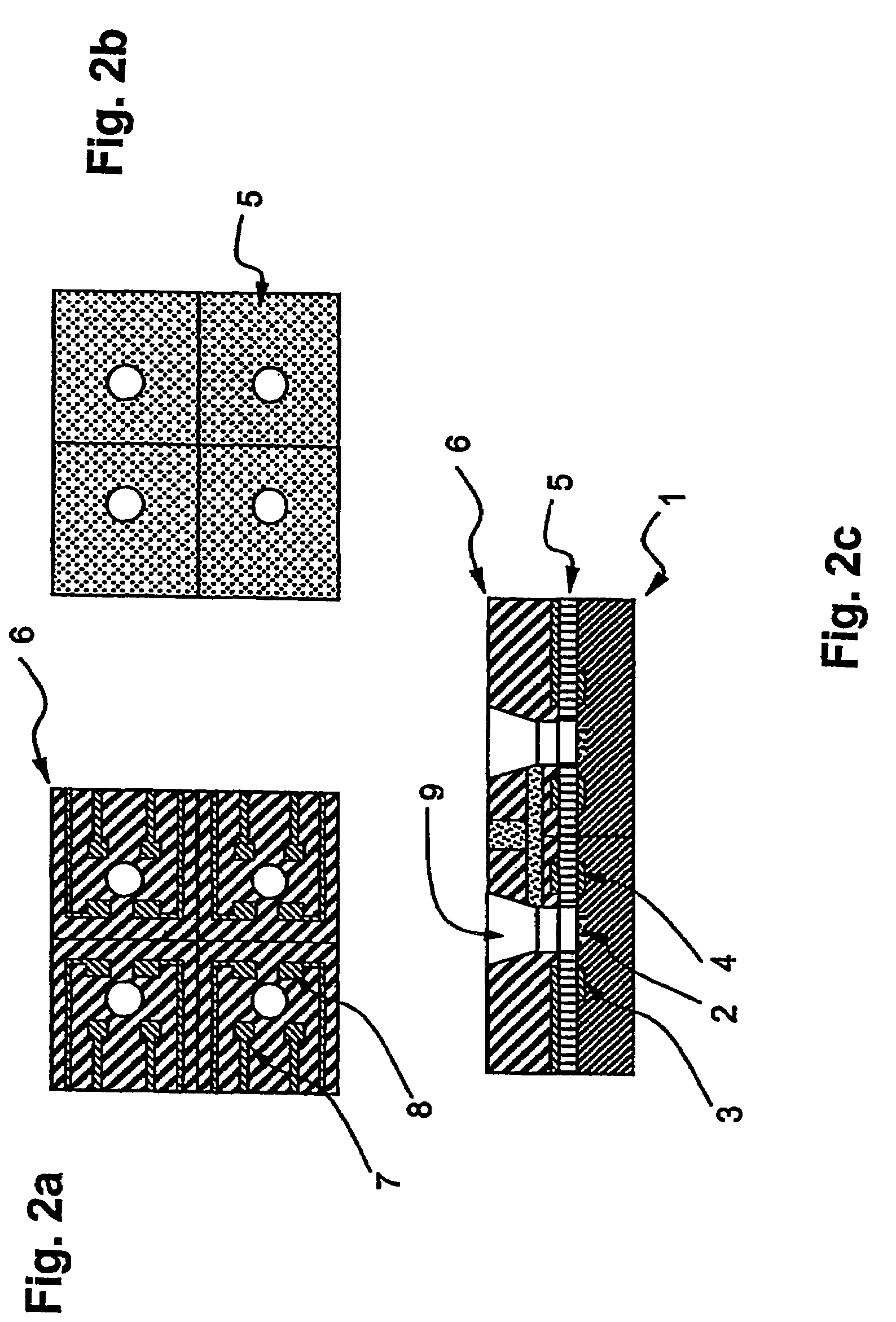Sensor arrangement with a plurality of potentiometric sensors
a potentiometric and sensor technology, applied in the direction of resistance/reactance/impedence, instruments, material electrochemical variables, etc., can solve the problems of complex solutions, high cost, and complicated solutions proposed by benton, and achieve safe and secure housing, ensure electrical conductivity, and optimize the sealing effect of elastic layers
- Summary
- Abstract
- Description
- Claims
- Application Information
AI Technical Summary
Benefits of technology
Problems solved by technology
Method used
Image
Examples
Embodiment Construction
[0021]FIG. 1 shows schematically the principles of functioning of the sensor arrangement of the invention. The FET-sensors 10 of the sensor arrangement have, in each case, a sensitive gate-region, which is contactable with an analyte in a sample chamber. The individual sample chambers of the sensor arrangement are connected with one anther via an electrolyte bridge. To this end, the electrolyte bridge includes an electrolyte canal, which communicates with the sample chambers via diaphragms. The sensor arrangement further includes a reference chamber, in which a reference electrode 13, for example of platinum, and reference-FET 12 are located. The reference-FET outputs a pseudo-reference-potential Udiffref, against which the potentials Udiff1, Udiff2, . . . UdiffN of the N FET-sensors in the sample chambers are measured. The measured-variable-relevant, potential difference, for example UpH1, is determined by forming the difference between the applicable potential and the reference po...
PUM
| Property | Measurement | Unit |
|---|---|---|
| pH | aaaaa | aaaaa |
| resistances | aaaaa | aaaaa |
| conductive | aaaaa | aaaaa |
Abstract
Description
Claims
Application Information
 Login to View More
Login to View More - R&D
- Intellectual Property
- Life Sciences
- Materials
- Tech Scout
- Unparalleled Data Quality
- Higher Quality Content
- 60% Fewer Hallucinations
Browse by: Latest US Patents, China's latest patents, Technical Efficacy Thesaurus, Application Domain, Technology Topic, Popular Technical Reports.
© 2025 PatSnap. All rights reserved.Legal|Privacy policy|Modern Slavery Act Transparency Statement|Sitemap|About US| Contact US: help@patsnap.com



